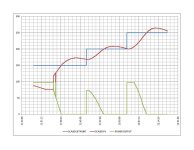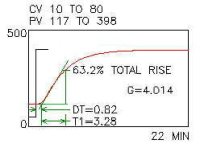rlawson
Member
Here's a chapter in the PLC manual that deals with their implementation of the PID loop. Pages 6-15 would be the relevant material, I think. Edit: I should note that this information pertains to the PID he will be moving to, not the one he has now.
http://www.automationdirect.com/static/manuals/d2user/ch8.pdf
You are correct. I have read that chapter so many times that I think I have it committed to memory.
Also, keep in mind that a batch furnace wouldn't really have a feed forward in the traditional sense. You would be thinking about belt-type furnace. A batch furnace (to me anyway) would have a load of X pounds placed in it and left there for the entire processing time, then removed. In my case X can range from 10 to 1000 pounds or more in some of our equipment.
Brian
You are correct again. This is exactly my type of process.
We have several different types of batch ovens with a constant load, and annealing ovens that have wire strands running through them. 1 of the batch ovens has a Chromalox PID controller, 1 has a Honeywell, and yet another has a Watlow controller. Even though all of the batch ovens have their similarities, PID parameters vary pretty wildly. I know that the heating and cooling rates, dead time, heating methods are all a little different though.





